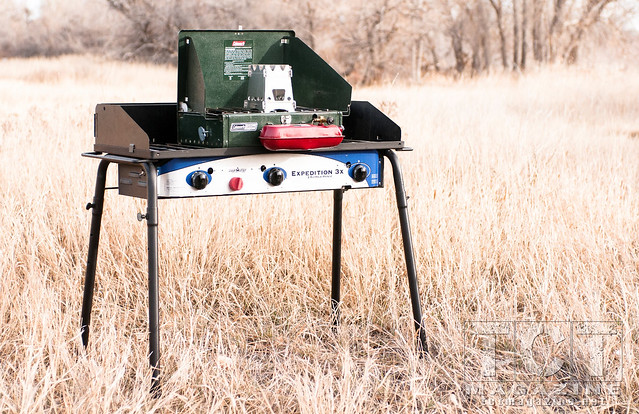Propane (Liquid Petroleum Gas)
I believe propane has become the most popular fuel for modern camp stoves sold in the United States. It is incredibly convenient, with the little green bottles of propane able to be found in nearly every sporting goods store in the country. Adapters can be purchased to run these stoves off of the larger, barbeque-style, bottles while on longer trips. Propane’s popularity as a fuel source allows for a wider range of stove styles to choose from.
Propane is limited, however, because of its physical properties. At atmospheric pressure, propane has a boiling point of -43°F. This means propane has a high vapor pressure at ambient temperatures. To make it economical for consumers to store and transport propane, it is sold in its liquid form. While its liquid form reduces the propane’s volume, it does require a heavy steel container for storage. As the outside temperatures drop and the propane temperature approaches its boiling point, the pressure inside of the bottle also drops. This can cause a reduction in fuel reaching the burner and, therefore, a reduction in heat generated. A second factor to consider in buying a propane stove lies, again, with the fuel bottles. The threads which connect the stove to the bottle can vary between countries, as the standards between countries can be slightly different. Luckily adapters can be purchased when traveling overseas.
Propane contains between 84,950 and 91,410 Btu/gallon of energy and weighs approximately 4.20lbf/gallon ; giving it an average energy to weight ratio of 20,995 Btu/lbf.
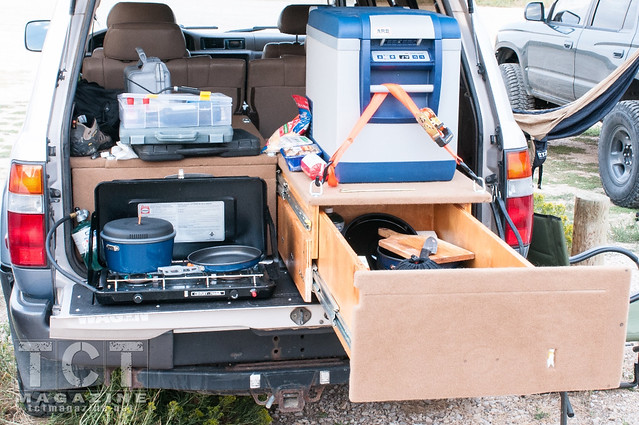
Propane Blends
To overcome the propane’s high vapor pressure, and resulting need for heavy fuel storage tanks, isobutane and/or N-butane is added to raise the boiling point. Raising the boiling point lowers the vapor pressure, at typical ambient temperatures, and results in thinner-walled storage tanks and overall weight reduction. These fuels are popular with backpackers as they offer similar energy to weight ratios to that of propane without the need for heavy containers. These blended fuels are limited, however, in cold weather as their boiling points tend to be at or around 0°F. As with propane though, once the temperature drops so does the fuels ability to perform.
To overcome the propane’s high vapor pressure, and resulting need for heavy fuel storage tanks, isobutane and/or N-butane is added to raise the boiling point. Raising the boiling point lowers the vapor pressure, at typical ambient temperatures, and results in thinner-walled storage tanks and overall weight reduction. These fuels are popular with backpackers as they offer similar energy to weight ratios to that of propane without the need for heavy containers. These blended fuels are limited, however, in cold weather as their boiling points tend to be at or around 0°F. As with propane though, once the temperature drops so does the fuels ability to perform.
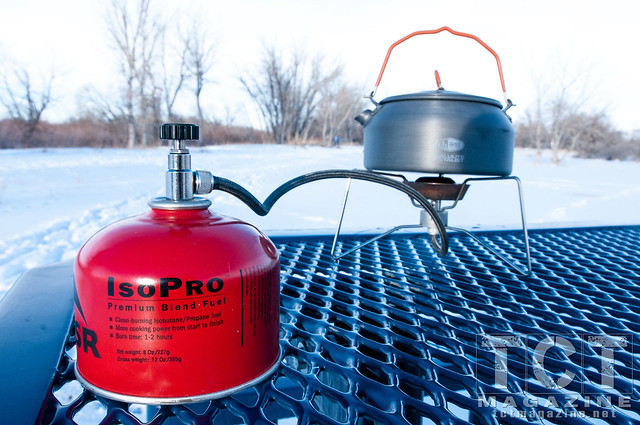
Gasoline/Petrol
Gasoline is probably the most readily available fuel type for modern camp stoves sold around the world; able to be purchased from any auto-fueling station in the world. Its physical properties allow it to be stored at lower (atmospheric) pressure and this results in gasoline stoves having the ability to function at much lower temperatures than their propane counterparts. The fuel tanks on these stoves require pressurizing to force the gasoline through the vaporizing tube and into the burners. As fuel is consumed by the burners, the air pressure in the tanks will lower and result in the need for subsequent re-pressurizing.
Gasoline is probably the most readily available fuel type for modern camp stoves sold around the world; able to be purchased from any auto-fueling station in the world. Its physical properties allow it to be stored at lower (atmospheric) pressure and this results in gasoline stoves having the ability to function at much lower temperatures than their propane counterparts. The fuel tanks on these stoves require pressurizing to force the gasoline through the vaporizing tube and into the burners. As fuel is consumed by the burners, the air pressure in the tanks will lower and result in the need for subsequent re-pressurizing.
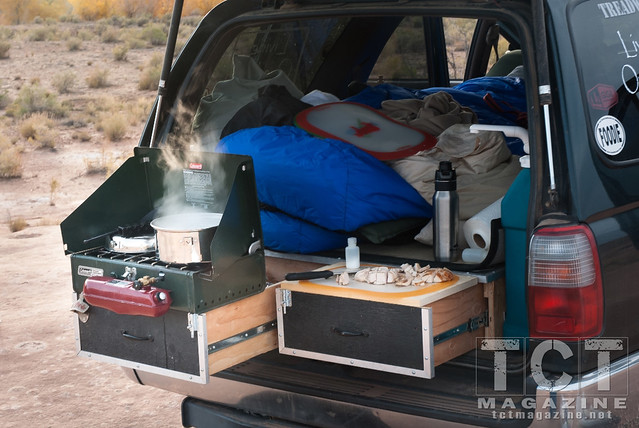
A less popular fuel source than propane, you are limited in the range of gasoline stoves on the market. Most gasoline stoves are geared toward the backpacker with Coleman® being the only company making multi-burner gasoline stoves for sale in the United States. The composition of gasoline also fluctuates throughout the year, with different blends being used to improve engine performance during the winter months. This changing of fuel blends affects stove performance, with winter fuels tending to foul burner components. Winter can also be tough on pump components; I was recently in Yellowstone and attempted to make dinner in 0°F outside temperature. The cold had caused the pump gasket to contract, resulting in an inability to pressurize the tank. After a few minutes sitting on the floorboards with the heater running, I was able to get the pump to work. Once working, the stove produced enough heat to make some fabulous shrimp tacos!
Gasoline contains between 116,090 and 124,340 Btu/gallon1 of energy and weighs 6.3lbf/gallon ; giving it an average energy to weight ratio of 19,081 Btu/lbf.
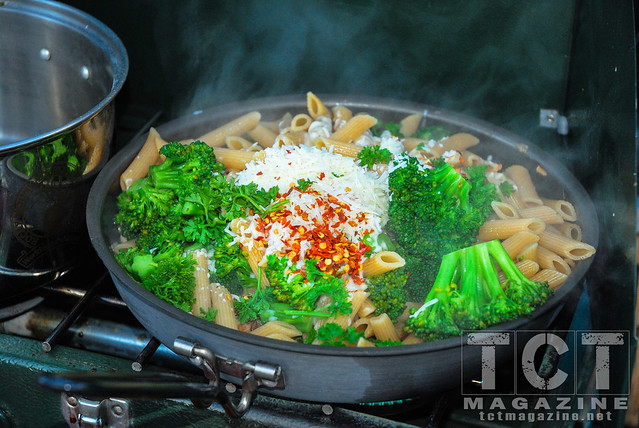
White Gas
Commonly referred to as ‘Coleman® Fuel,’ white gas is a highly-refined type of liquid petroleum-based fuel. Unlike its cousin, gasoline, white gas does not contain additives used in the combustion engine cycle and therefore does not fluctuate with the seasons. The lack of combustion engine additives also allows white gas to burn more cleanly, and white gas fueled stoves are more commonly available than those fueled by gasoline. Most manufacturers recommend burning white gas in multi-fuel stoves to ensure long component life.
White gas has an energy to weight ratio of 19,121 Btu/lbf.
Commonly referred to as ‘Coleman® Fuel,’ white gas is a highly-refined type of liquid petroleum-based fuel. Unlike its cousin, gasoline, white gas does not contain additives used in the combustion engine cycle and therefore does not fluctuate with the seasons. The lack of combustion engine additives also allows white gas to burn more cleanly, and white gas fueled stoves are more commonly available than those fueled by gasoline. Most manufacturers recommend burning white gas in multi-fuel stoves to ensure long component life.
White gas has an energy to weight ratio of 19,121 Btu/lbf.

The Others
So what about kerosene, diesel, alcohol, and wood stoves? While I believe each of these fuel types offer certain benefits over some of the one listed above, there are fewer commercial options for these types of stoves. I, for one, would love to see a two-burner camping stove that can burn diesel. The drawback to diesel, along with kerosene, is a rather dirty-burning fuel for camp stoves and tends to coat the cookware with soot. Alcohol and wood stoves are gaining popularity among the ultra-light crowd, these fuels offer little flame control and are better suited to rapidly boiling water.
So what about kerosene, diesel, alcohol, and wood stoves? While I believe each of these fuel types offer certain benefits over some of the one listed above, there are fewer commercial options for these types of stoves. I, for one, would love to see a two-burner camping stove that can burn diesel. The drawback to diesel, along with kerosene, is a rather dirty-burning fuel for camp stoves and tends to coat the cookware with soot. Alcohol and wood stoves are gaining popularity among the ultra-light crowd, these fuels offer little flame control and are better suited to rapidly boiling water.
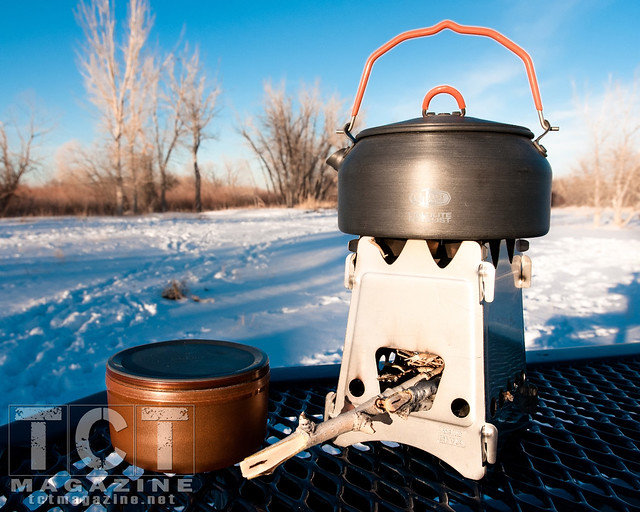
In our first article we discovered that stoves are not created equal, so too it’s clear that fuel types are not created equal. Propane offers the highest average energy to weight ratio but its high vapor pressure requires heavy storage tanks. Blended propane fuels reduce the vapor pressure but have limitations at colder temperatures. Gasoline and white gas are more stable fuels at ambient temperatures but are limited in the number of stoves that burn these fuels. In the next issue we will be wrapping up our three-part series by discussing how a stove’s overall design can affect how we are able to cook in the field.
